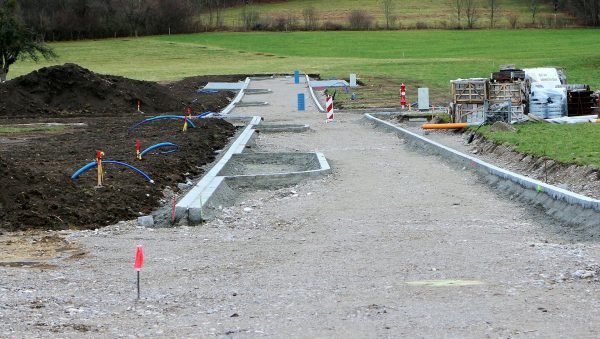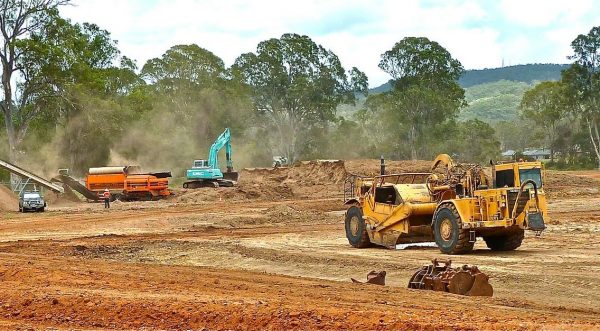When a road needs to be designed, the manuals for these are produced by Highways England. There are 16 documents which comprise the Design Manual for Roads and Bridges (DMRB); they can be found here.
The manuals contain all process from getting a road approved through to design, construction and maintenance. When planning a road, there are many considerations. The road must fit with relevant government policies and plans. These include the mix between private and public transport, goals for economic growth, political promises to reduce casualties on the road, etc. Governments also define funding allocations for different modes of transport. One party may prioritise roads while another prioritises rail.

Designing and constructing a small road for a housing development is fairly straightforward but still must be designed within the rules.
Roads are built in response to existing traffic demand (for example, a bypass to a town or village where safety and efficiency benefits are desired, or adding lanes to improve capacity where there’s severe congestion), projected traffic demand (for example, where a new industrial park is planned) or as a replacement to an existing road (for example, if a road is destroyed due to a landslip or erosion, or deemed unable to be reopened or maintained due to other concerns). The road’s position must fit in with the current network and there will be a projection for the useful life of the road as it stands, for example, 20-40 years.

The various communities on and around the road will be affected and may want input as they will be understandably self-interested. Roads can sometimes bisect communities and may require houses to be requisitioned for the land. They can cause unwanted noise and, if poorly planned, can actually increase congestion in other areas if feeder roads aren’t upgraded. Residents may be worried about construction noise and disruption, visual pollution and air pollution. Local communities will have diverse factions that will disagree on speed limits. For example, a local freight company may want a higher speed limit to improve delivery times while concerned parents may want lower limits if they fear for their children near the road.
Road construction is costly therefore a cost-benefit analysis is always applied. This will take into consideration any reduction in travel times, increases in throughput which may have a positive impact on freight costs, improvements in the public transport network, improvements to safety for cyclists, pedestrians and motorists and whether the road will bring a business benefit to the area (for example, it creates a new opportunity for a shopping centre or business park).
Public transport frequency and placement are often contentious. People are reluctant to have bus stops right outside their homes, for example. The budget might not extend to implementing bus or cycle lanes immediately but the road could be constructed bearing those in mind. Cyclists and pedestrians must be able to safely use the road. Positions and types of crossings need to be considered.
| Volume | |
| Volume 0 | Introduction and General Requirements |
| Volume 1 | Highway Structures: Approval Procedures and General Design |
| Volume 2 | Highway Structures: Design (Substructures & Special Substructures), Materials |
| Volume 3 | Highway Structures: Inspection & Maintenance |
| Volume 4 | Geotechnics & Drainage |
| Volume 5 | Assessment & Preparation of Road Schemes |
| Volume 6 | Road Geometry |
| Volume 7 | Pavement Design & Maintenance |
| Volume 8 | Traffic Signs & Lighting |
| Volume 9 | Traffic Control & Communications |
| Volume 10 | Environmental Design |
| Volume 11 | Environmental Assessment |
| Volume 12 | Traffic Appraisal of Road Schemes |
| Volume 13 | Economic Assessment of Road Schemes |
| Volume 14 | Economic Assessment of Road Maintenance |
| Volume 15 | Economic Assessment of Road Schemes in Scotland |
